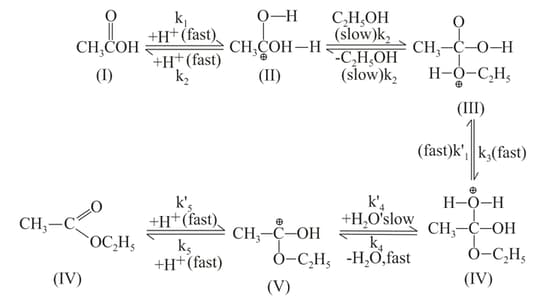Molecularity of a Reaction
Molecularity of a Reaction: Overview
This topic covers concepts, such as Molecularity of a Reaction, Unimolecular Reaction, Bimolecular Reaction, Trimolecular Reaction, Mechanism of a Reaction, Elementary Reactions, Complex Reactions, and Rate Determining Step.
Important Questions on Molecularity of a Reaction
Consider the reaction:
The rate equation for this reaction is:
The following are the suggested mechanisms.
What is the correct mechanism that gives the above rate equation?
Which statement about molecularity of reaction is not correct?
For a unimolecular reaction:
The above reaction is an example of
What is the molecularity of the above reaction?
Trimolecular reactions are uncommon because:
If two reactants take part in a reaction, then:
Which of the reactions shows this kind of example ?
If in a unimolecular reaction, takes place according to the mechanism
I.
II.
where are the rate constants and P, and stand for product molecule, normal molecules of reactants and activated molecules of reactants respectively.
Which of the following statements are correct?
For next two question please follow the same
If in a unimolecular reaction, products takes place according to the mechanism
I.
II.
where are the rate constants and P, and stand for product molecule, normal molecules of reactants and activated molecules of reactants respectively.
Which of the following expressions are correct?
The reaction between and occurs in the following steps:
The reaction intermediate in the reaction is
Molecularity of an elementary reaction
Identify the correct potential energy vs reaction co-ordinate graph, which is consistent with given mechanism.
The mechanism of esterification in presence of acid catalyst (H2SO4) is proposed as follows:

Two different reactants involving in a reaction can not be :
Collision theory is true for
The interest rate on debentures is typically:
Planning may not work in a dynamic environment due to which of the following reasons?
What characteristic describes planning as a process that involves setting objectives and determining a course of action?
By using following mechanism determine the order of the reaction
(fast)
(slow)
(fast)
Consider the reaction
The reaction of nitrogen dioxide and ozone represents is first order in and in . Which of these possible reaction mechanism is consistent with the rate law?
| Mechanism I: | |
| Mechanism II: | |
